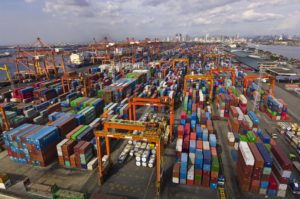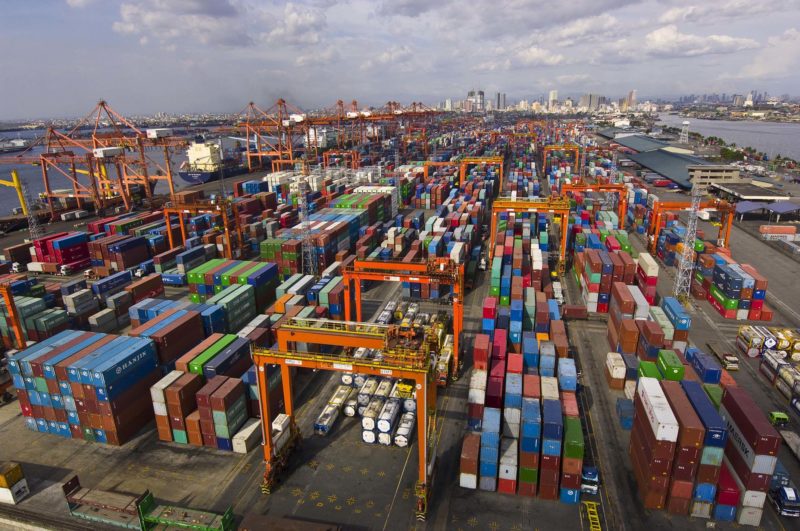
Yard utilization at Manila ports is high but there is no port congestion like that seen four years ago, according to shipping lines and the Philippine Ports Authority (PPA).
“If you’re looking at utilization levels right now, they’re very high but to say congested na hindi gumagalaw na parang (and containers are not moving like in) 2014 (during the Manila port congestion), we’re very far from that,” Association of International Shipping Lines (AISL) president Patrick Ronas told PortCalls in a chance interview at a Manila event on September 12.
During the Manila port congestion in 2014, brought on by the declaration of a unilateral truck ban by the City of Manila, movement of cargoes in and out of the port was severely restricted and vessels queued for weeks in order to berth.
Claims of port congestion have prompted Senator Aquilino Pimentel III to issue a statement earlier saying he would summon officials of the Bureau of Customs (BOC) to explain and account for the “slower movement and longer delays” in the release of imported shipments at the Manila ports.
Ronas said utilization levels at Manila port are high but “manageable,” adding that the port continues to run smoothly.
He said the high utilization may have been brought about by delays in the arrival of vessels, which may have encountered delays at other ports.
International Container Terminal Services, Inc. (ICTSI) senior vice president and region head of Asia Pacific and Manila International Container Terminal (MICT) Christian Gonzalez, during the same event, told media that “there’s a lot of bunching of vessels coming from Shanghai in particular.”
He said this is because of the “strange weather patterns” that are causing delays in the arrival of vessels. He said he’s “quite nervous about this weekend (Sept 15-16)” with the landfall of tropical cyclone Ompong (international name Mangkhut) as it can mean stoppage in some port operations and queuing of vessels.
“That’s what happens when you have these strange weather patterns,” he noted.
PPA assistant general manager Hector Miole, in a separate interview with media during the same event, said some port operations, such as berthing of vessels, may have to be stopped as moving could be too risky amid the inclement weather, and this can cause vessel queuing.
He added that another cause of queues is when vessels arrive late or out of their scheduled window for berthing.
On the ports’ preparedness for the peak season, Miole said terminals are ready with contingency plans as peaking around this time is a yearly occurrence.
He asked importers and logistics service operators to help lower the high utilization by clearing cargoes from ports to free up space inside terminals.
BOC earlier also denied there was port congestion at Manila’s international terminals, saying yard utilization at MICT and South Harbor was at normal rates of 86% and 88%, respectively.
In a press statement on September 4, port operator Asian Terminals Inc. said that as of that date, yard utilization at South Harbor averaged 76%, with no vessels waiting to dock and berth utilization at a “healthy” 50%. Crane production was averaging 25 moves per crane per hour.
In a separate statement on September 5, PPA said yard utilization at the Manila port—composed of MICT, South Harbor, and Manila North harbor—remained at a healthy combined utilization rate of 67%. Combined berth occupancy rate is likewise healthy at an average of 59%, while quay crane productivity is at 24 moves an hour per crane. – Roumina Pablo





